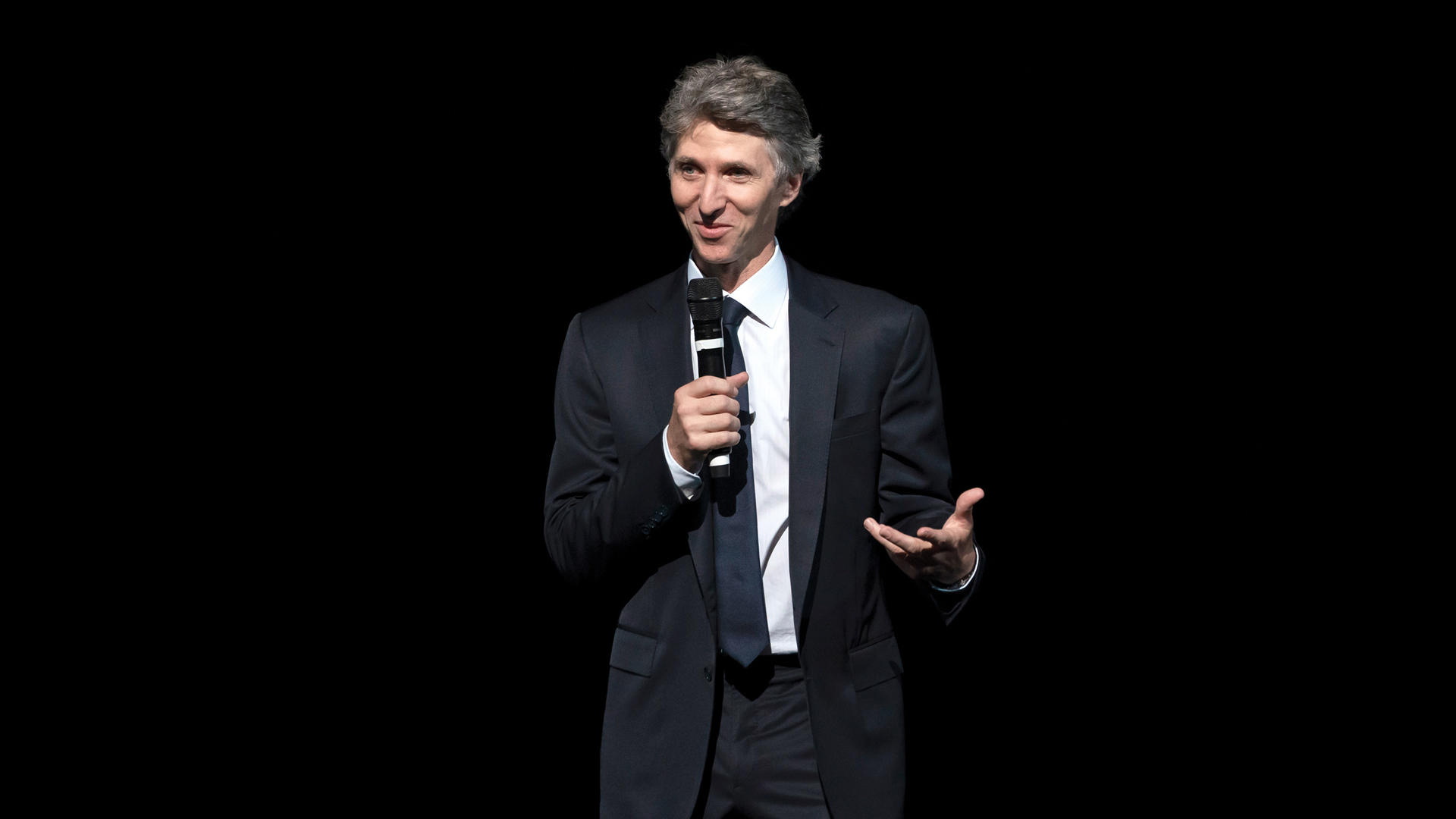
The day after convocation, recent alum Philip Sheegog returned to Juilliard to chat with President Damian Woetzel about the previous day’s events—and what lies ahead.
Coming off the momentum of yesterday’s action-packed convocation, what are you excited about as you begin your second year as president of Juilliard?
I’m excited about all of it, starting with last week, which brought more than 300 new students to Juilliard. Getting to meet many of them and hear where they’re from and how they arrived here fills me with the most palpable energy that I could imagine. It also makes me feel an excitement of obligation: that what we are supposed to do, our role in the ecosystem, is to launch young people into the world. There has also been a lot of listening since I came to Juilliard, and that’s all been about gauging what people are thinking, feeling, or needing. To take the student perspective in particular, what needs are arising today that might be different from what they were even five years ago, and how can we be responsive to them? What is the field saying about what our artists are going into that we can be responsive to? There’s listening both inside the building and outside the building, and I try very hard to keep my antennae out!
In terms of listening to the field, what do you see as the unique challenges faced by students training here and in the world they’re about to go into?
Some of the challenges our students are facing as they go out into the world have to do with structure, in terms of the numbers of defined positions versus the numbers of more self-generated and entrepreneurial-type activities. There are tectonic changes that are affecting not only the opportunities available, but also what’s required of young artists, which then affect their education. The idea of coming here to hone your craft on the highest level remains intact, but the possibilities for engagement with that and with each other are constantly evolving. We have to have doorways available for people to move through into the bigger world. There are these circles around us at Juilliard, like waves upon waves. They are the institutions connected to us, the orchestras and dance companies and theatrical productions, the Hamiltons on Broadway, or the Amazon series down in Georgia, the entrepreneurial roads like National Sawdust or Le Poisson Rouge. There are opportunities that we can make, but we also have to recognize that they are always evolving and never done.
At convocation, you introduced an expansion to one of your initiatives, the Creative Associates. In reference to your earlier analogy, it seems like these associates are their own “wave generators” and that this program is pulling them into Juilliard’s orbit. How do you see this program continuing to enhance the school?
Last year we started bringing catalytic artists—people who make things happen in different ways—to Juilliard to start thinking about how their presence can affect education. I think there is always opportunity for disruption, for creating “edge effect” situations where ecosystems rub up and produce new ideas. That was the intent from the beginning. It also had the intent of driving the field in different ways. Having Creative Associates at Juilliard affects what comes out of this building later, but it also affects their work. That possibility is always present in Juilliard. You get to partake in something that is educational on every level; the learning doesn’t stop. My hope is that this causes a bubbling-up effect within the school for the students and the faculty and everybody. This is not for any one person; this is for all of us to have an experience together. Each time you throw a rock in the water, the water rises a little bit!
What do you see as the role of the arts in society today?
It is essential that as a civilization we have tools for empathy, ways that we can feel, ways that we can develop our own capacities as human beings to progress. The arc of artistic progress at convocation was great yesterday. Ara Guzelimian [dean and provost] showed an image of a 45,000-year-old bone flute, the oldest instrument anyone’s ever found, and it gave us such perspective because we recognize that this is timeless. This is how we have always needed to connect, and I think it is that connection that makes the artist an indispensable piece in our society. While in some cases it’s to call out things that need attention, at other times it’s simply to record in ways that go beyond simple narrative: we were here; we mark this occasion; we have a chance to experience something as people together that is important.
You brought up several times yesterday the continuum of Juilliard, that we are but the latest links in the rich tapestry of Juilliard’s history. With that in mind, what do you dream for Juilliard to be known for moving forward?
In some ways, the dream for Juilliard is to be a place that puts forward the opportunity for artistic growth on the highest level for all people. Recognizing that talent has always been greater than opportunity, I dream for Juilliard to be a place that works to ever expand the possibility for excellence to grow, sending forth artists who are inspired to pursue as a practice their participation in the world in ways that help to create a new golden age of creativity.
Since graduating, Philip Sheegog (BM ’17, MM ’19, cello) has launched a genre-bending duo, ARKAI, performed at the Met Breuer’s first sound-based installation, co-produced Global Perspectives including an alumni jam session at Juilliard, and is teaching, composing, and commissioning new work